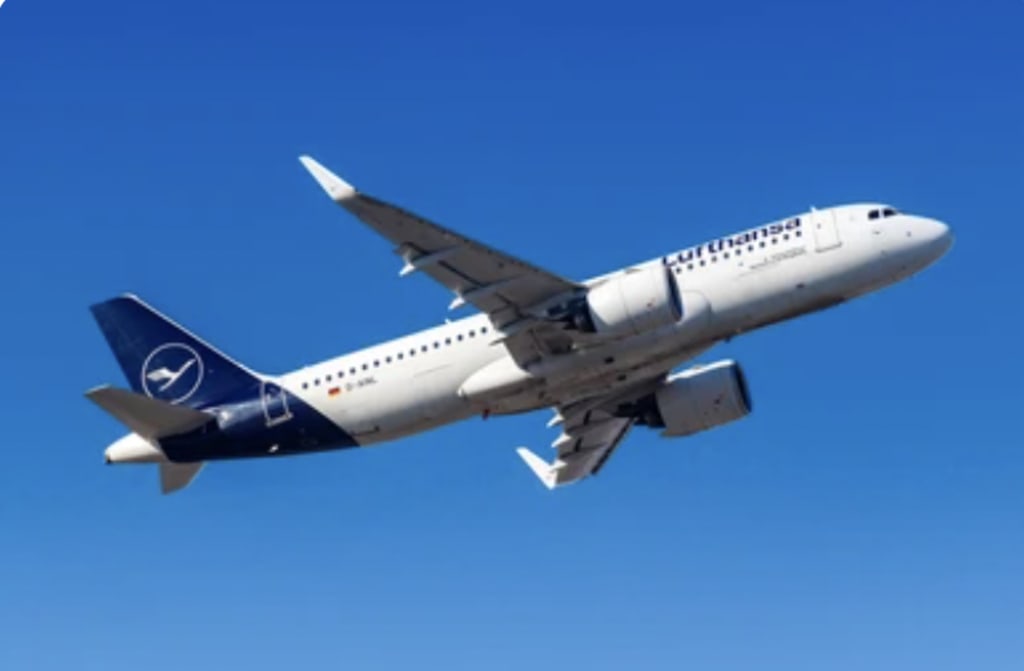The real reason flying on an airplane in the US sucks.
By Ajay Abraham

Ah, the joy of flying. Isn't it delightful that the skies serve as the playground for travelers worldwide? People around the globe indulge in luxurious flights, savoring wine while comfortably reclining in their seats thousands of feet above the ground. Meanwhile, here you are, standing in a serpentine security line at a congested airport, hoping to make it to your flight on time—assuming it hasn't been canceled. Let's face it, flying in the United States has become a rather unpleasant experience that seems to be deteriorating with time. But why is that the case? It wasn't always like this. In the early days of commercial aviation during the 1950s, flying was a luxurious affair.
Spacious and comfortable seats, hot and delicious meals, and being a flight attendant were highly sought-after. However, there was a significant drawback—flying was expensive, primarily catering to the affluent. Over time, it became more affordable, efficient, and safer. Yet, it didn't become more enjoyable. So, what led to the decline in the flying experience? One factor is the transition from an exclusive luxury experience to a mass transportation system in the sky. Nowadays, numerous flights operate daily at popular American airports, necessitating a well-coordinated operation. This demand means airlines have to find ways to move everyone at a reasonable cost. Consequently, airplanes became more crowded, seats shrank in size, and luxury meals were replaced by simple boxed offerings, if you're lucky. More often, passengers receive a small bag of pretzels and half a can of soda. Several elements of the flying experience have also changed, and unfortunately, not for the better.
One of the most iconic scenes in romantic comedies involves the male lead realizing his mistake in letting the woman he loves board a flight to Paris. With minutes remaining, he races through the airport, bypassing the security line, and reaches the gate just in time to get her attention, propose, and receive applause from onlookers. However, in today's world, that scene would unfold quite differently. Our romantic hero would likely find himself apprehended by a dozen security guards and escorted to a nearby federal interrogation facility. Increased security measures at airports and on planes resulted from a series of hijackings, terror attacks, and other incidents. In the late 1990s, airport security was much more relaxed, allowing individuals to sneak onto planes as easily as they could board trains or buses. But those days are long gone, replaced by the not-so-pleasant aspects of modern-day flying.
And the "fun" starts well before boarding the plane. What is the most stressful part of flying these days? For many, it's the journey to the airport itself. Airlines typically recommend arriving at the airport up to two hours before the flight to navigate security, check-in, and ensure compliance with baggage regulations. Since 2001, security practices have undergone significant changes as a response to new threats. For instance, passengers are still required to remove their shoes at U.S. airports due to Richard Reid's attempted shoe bombing in late 2001. Moreover, the ban on carrying liquids exceeding 3.4 ounces, including gels, creams, and pastes, creates inconveniences such as discarding water bottles and purchasing overpriced water at airport kiosks. These restrictions even prevent passengers from bringing homemade jams home as gifts for their grandkids. Unfortunately, these inconveniences are just the tip of the iceberg.
Once you successfully navigate airport security and board the plane, you would expect a smooth journey, right? Not quite. Nowadays, it seems that every aspect of the flying experience requires an additional fee. Checked bags, substantial in-flight meals, and even seat selection fall under the pay-to-play model. Those who opt for the basic fare may find themselves squeezed into a cramped seat with minimal legroom, surrounded by fellow passengers who are equally disgruntled about the diminishing comforts of air travel. Airlines have been reducing seat pitch (the distance between seats) to fit more passengers on each plane, making the flying experience even more uncomfortable. Additionally, the practice of overbooking flights has become common, leading to the possibility of being bumped from your desired flight if it's oversold.
Once the plane takes off, there are more aspects of the flying experience that have changed over the years. In-flight entertainment has evolved from seatback screens with a wide selection of movies and shows to personal devices being used to stream limited content through the airline's app. This shift has both pros and cons, as it allows passengers to bring their own entertainment but also places the burden on them to have a suitable device and reliable internet connection.
Another significant change is the prevalence of low-cost carriers in the market. While these airlines offer cheaper fares, they often come with additional fees for services that were once included in the ticket price. This can include anything from carry-on bags to seat assignments to in-flight snacks. Passengers may find themselves nickel and dimed for every aspect of their journey, leading to a perception that the flying experience has become more about cost-cutting than providing a pleasant travel experience.
It's important to note that not all airlines and flights provide a subpar experience. Some carriers prioritize customer service and strive to make the flying experience enjoyable. However, the overall trend in the industry has been a gradual decline in the quality of the flying experience, driven by factors such as cost optimization, increased security measures, and the rise of budget airlines.
Fortunately, efforts are being made to improve the flying experience. Airlines are investing in modernizing their fleets with newer and more comfortable aircraft, including features like improved cabin air quality and larger overhead bins. Some airlines are reintroducing amenities like complimentary snacks and drinks on certain flights, aiming to differentiate themselves from the low-cost model.
In conclusion, the decline in the flying experience in the United States can be attributed to various factors, including the transition from luxury to mass transportation, increased security measures, cost-cutting practices, and the rise of low-cost carriers. However, it's worth noting that there are still airlines and flights that prioritize passenger comfort and strive to provide an enjoyable travel experience.
About the Creator
Ajay Abraham
My name is Ajay Abraham from New York. I am partnered with the National Joy of America to create stories for the masses to enjoy.
Enjoyed the story? Support the Creator.
Subscribe for free to receive all their stories in your feed. You could also pledge your support or give them a one-off tip, letting them know you appreciate their work.






Comments
There are no comments for this story
Be the first to respond and start the conversation.